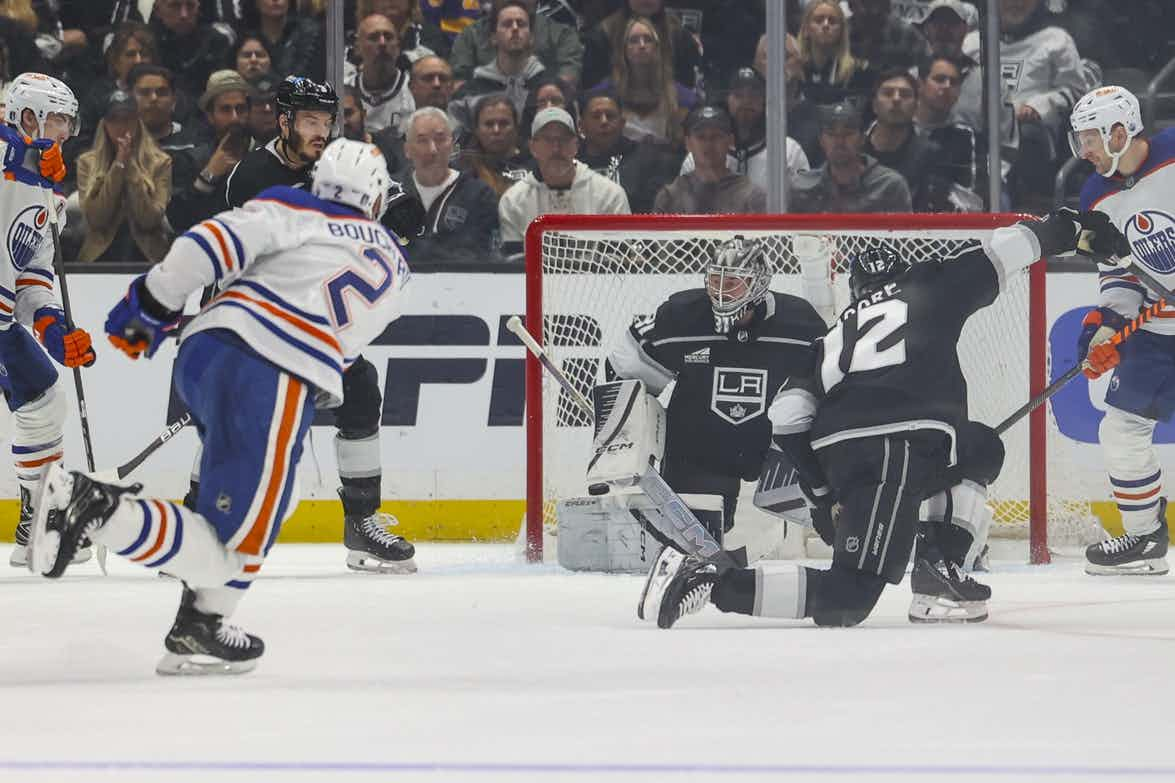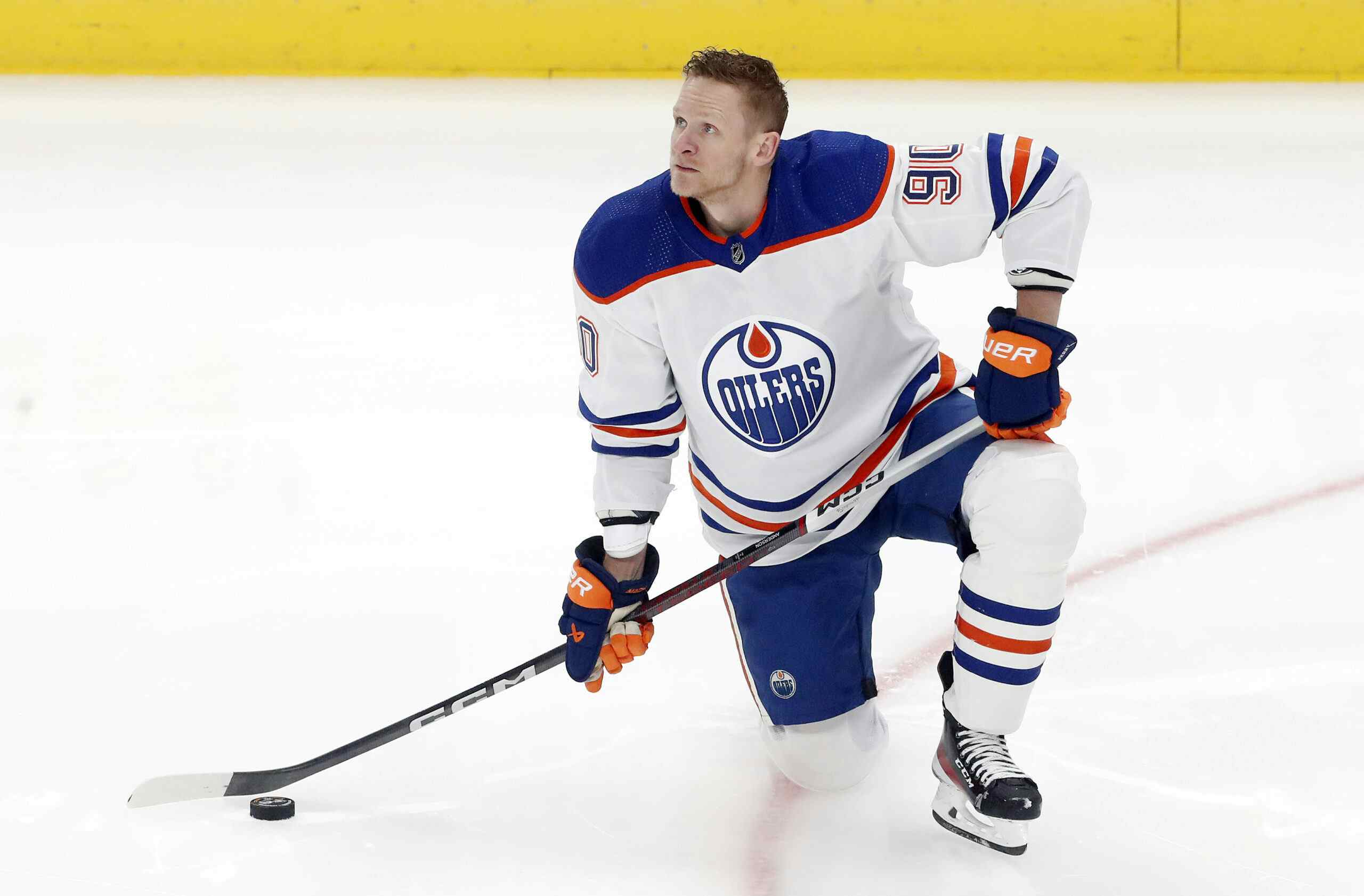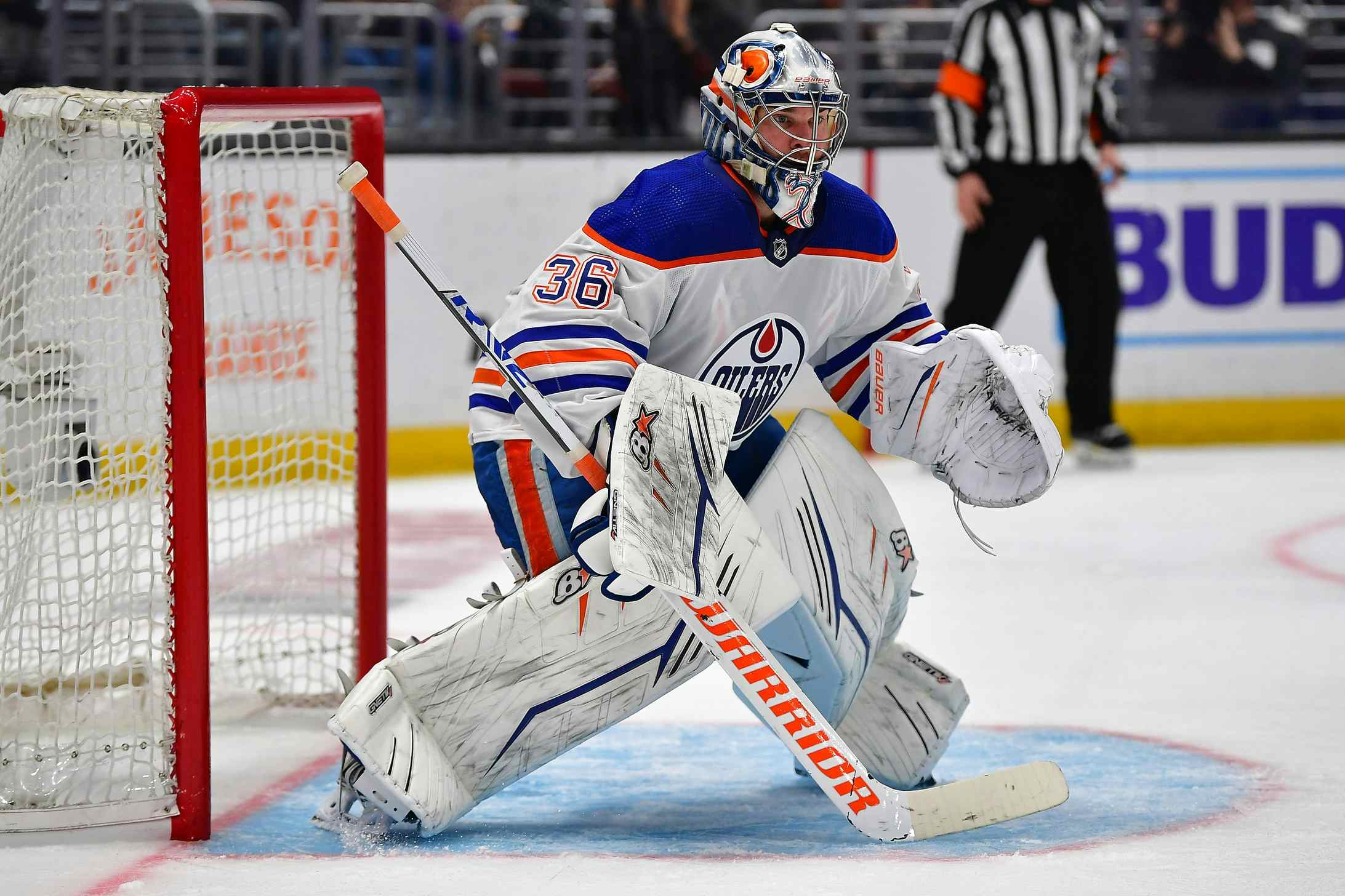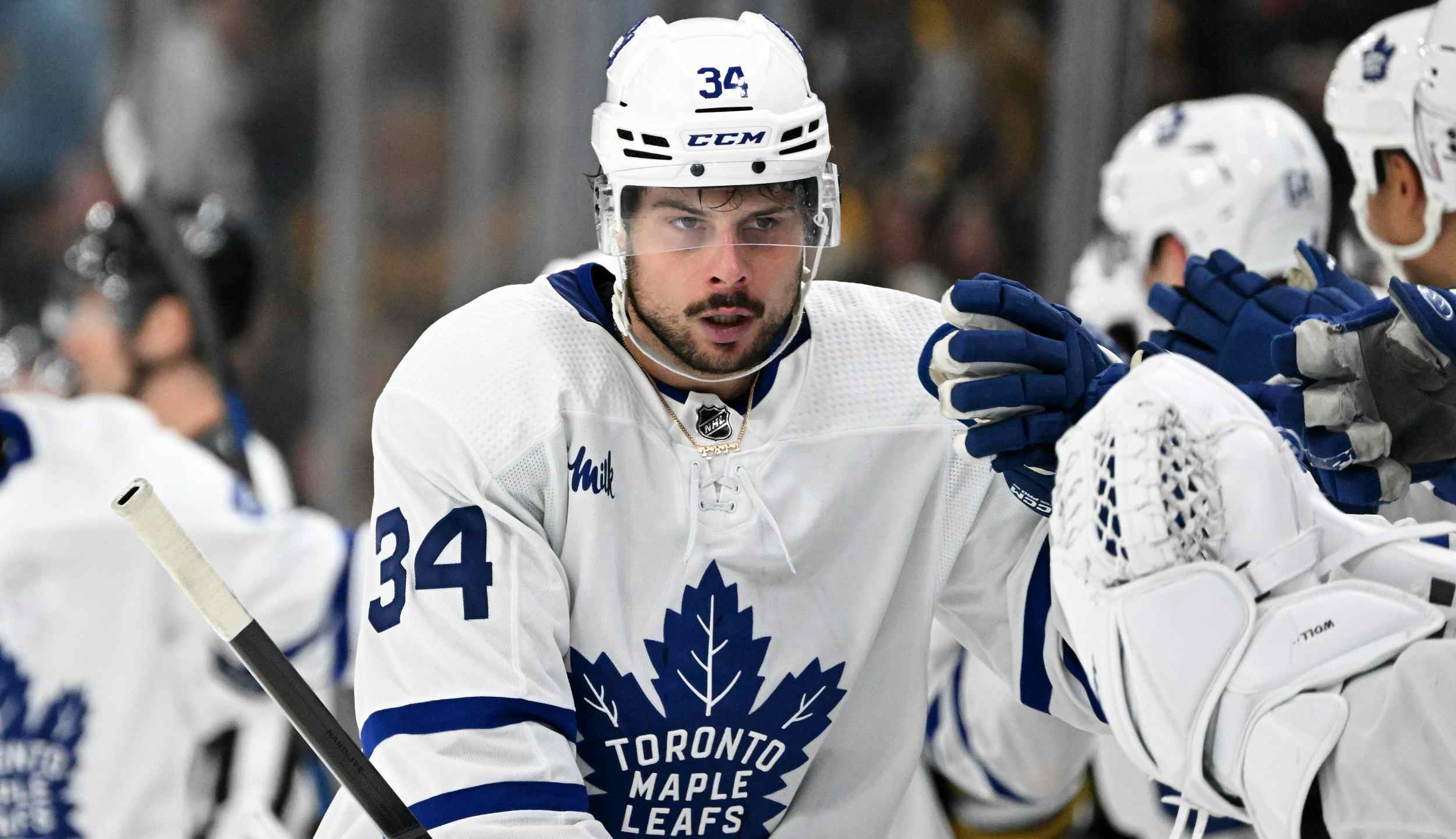WERE THE INJURIES CONNECTED?
By Jason Gregor
12 years ago
Many are wondering if Ryan Nugent-Hopkins’s shoulder injuries are connected? Unless you are the doctor or trainer working on Nugent-Hopkins, then you are likely only speculating. Our natural instinct is to assume they are related, and they might be, but there is also a good chance they weren’t.
The are actually three joints of the shoulder, and that is why it is possible that the injuries aren’t directly connected. I’m far from a doctor or even a trainer, but the joints are the glenohumeral, acromioclavicular and sternoclavicular. I can barely spell them, so I won’t try and explain what they are, so I linked to them if you want to know more.
I’ve had numerous emails, tweets and I’ve even read some articles with people suggesting the Oilers should just shut down RNH for the remainder of the year. I understand why fans get nervous, considering how many Oiler injuries they’ve witnessed the past few seasons, but is there any reason to believe this is necessary?
I tracked down Kim Layton to get his thoughts on the injuries. Layton has a Bachelor degree in Phys. Ed, he’s a certified Athletic Therapist, Certified Athletic Trainer, Certified Strength and Conditioning Specialist and he’s worked with numerous pro teams and pro players in the past decade.
JG: Can you explain the differences between a shoulder separation and a shoulder strain?
KL: Well, quite frankly there’s a lot. I came up with 11 that are basically unrelated that are fairly common. So for anyone to sit there and say, ‘there’s no way it’s something different,’ needs to get their facts straight. There are a lot of different things that can go wrong in the shoulder.
There’s varying degrees of a separation; your collar bone where it attaches to your shoulder blade ‑‑ I’m trying to use terms that everyone’s going to understand here ‑‑ right on the tip of your shoulder on the outside, there’s a little joint where your collar bone meets your shoulder blade, and that’s your AC joint, your acromioclavicular joint. So when that ligament gets sprained ‑‑ not strained ‑‑ sprained, that’s separation. Now, that’s as simple as a first degree which means it’s a little sore; you’re probably good in a week or so. There’s a second degree where there’s a little bit of movement. You can actually kind of push it up and down, and that’s got to get solid up there. Then there is the third degree, which is a complete rupture, where you get that collar bone sticking right up out of your skin there; you can visibly see it. So that’s a separation.
A strain is always related to muscles or tendons. So basically, that means it’s a pulled muscle. It can have varying degrees. Anywhere from that’s kind of sore to some fibers damaged with a visible defect. You can see a dent where the fibers are torn to a complete rupture where it’s no longer intact.
JG: So in a case like this, is it reason to be concerned? And what would you do in the future when it comes to rehabbing, building up the strength around it, to try and prevent this from happening again? Because that wasn’t an overly devastating blow that he took.
KL: Right. Depending on the injury itself, they require different times. Sometimes they require different rehab in general, so it’s really hard to speculate on that. If they’re talking strain, you have to look at the rotator cuff. I would think that’s probably the most common that’s going to happen, and that can tweak over nothing. But that could also lead to impingements. That can lead to so many different things which is what I mean.
There are a lot of different injuries out there. Interesting thing is, I was reading before you called, what he said about it, and he said, ‘Same shoulder but a different injury. It’s not close to my first injury. I could feel it as soon as I got hit. My shoulder kind of dropped.’ If you get that feeling like your shoulder dropped ‑‑ and I’m not saying this is it; I have not talked to any of the Oilers; this is just based on what he said ‑‑ you could be even looking at a dislocation or a subluxation. Dislocation is where it’s out; they got to put it back in. Subluxation is where it kind of goes halfway out and then jams back in. That’s more of a my shoulder kind of dropped. Or you could even be looking at the nerves where everything just got jammed up. People call them burners, where all those nerves are running underneath that clavicle get all messed up, and the arm literally drops. It goes dead, so that’s going to take some time to heal.
There are so many things that could be going on, unless you actually are treating him you don’t know if they are connected. There is very good chance they aren’t based on how many things can go wrong with a shoulder.
JG: Are there ways then to protect the shoulder to ensure the chance of that not reoccurring in the future? What do you do to do that?
KL: You can never plan for collision sports. That’s the unfortunate thing. If it’s a strain that means it’s muscular related. So if it’s muscular related, then literally it could be 7 to 10 days. No big deal. He may never experience it again, but if there’s 7 to 10 days, I venture to think that you’re only looking first degree. Not a huge issue. Probably won’t have problems with it later as long as they make sure he keeps his range and works his strength back. It’s not that awful.
If it’s second degree or third, now you’re in trouble, but there’s no way it’s 7 to 10 days. But when it comes to collision sports, all you can do is do your rehab. Every team, every doctor, every trainer is going to have a certain protocol that the player has to do before they’re allowed back.
I know a trainer back in the day when I was working with teams and he would say: Look, if an athlete can’t grab this amount of weight compared to his other arm and lift that over his head 50 times in a row without experiencing pain, he’s not going back in. That was just his protocol. The player wasn’t going back in yet. So everyone is going to have their idea of when that player is ready to go back. And if they can do it and the years have told them that this means they’re ready to go back and he’s feeling good and the doctor says he’s good, why would you hold him out?
JG: If it’s a sprain, how that’s different than a strain, and is one more severe than the other?
KL: Well, a sprain, now you’re looking at other tissues. So a sprain, you’re looking at ligaments. So that would be that AC separation is technically a sprain of that AC joint, right? Y
ou could be looking at the capsules. So every joint in the body has got almost like a wax bag around it that’s full of the fluid that allows for the lubrication and the movement. And if that gets sprained, that can cause a lot of pain along the way because every time you move your shoulder it’s going to light up and it’s going to flare up and you’re going to lose that strength and your arm is going to shut down. That can happen just because of a little bit of movement. It can happen because of a subluxation which, like I said, it pops out, goes back in a little bit. Where it’s a complete dislocation, where they’ve had to put it back in, or it spontaneously reduces as he walks back to the dressing room; that can happen sometimes too. So a sprain and a strain are two very, very different injuries with somewhat different rehabs. As for the two in seriousness, it depends on the level and the degree of the injury to say one is more serious over the other.
JG: Okay. What about long term? If you’re somebody who strains a shoulder or sprains a shoulder, is there one that is more likely to cause more damage down the road?
KL: I think it would depend where exactly you did it. I’ve seen people with separated shoulders. It happens once, never happens again; they never have issues with it. And then you look at rotator cuffs. Some people can strain their rotator cuff, hurts like crazy for a long time, they do proper rehab and they never have an issue.
Then you get the people that it’s a very minor thing, and it just gets worse over the years. And by the time they’re 50, they wind up with a frozen shoulder. They literally can’t lift their arm 45 degrees off their body. The body is a really weird thing in the sense that nobody is going to react the same way. So that’s a pretty tough one to judge on without knowing specifically what the injury is.
JG: Now, when you were looking at rehabbing it afterwards ‑‑ because this is now two shoulder injuries ‑‑ whether they’re strains, sprains, separations, its two shoulder injuries this year for Ryan Nugent‑Hopkins. To ensure that it doesn’t become a chronic problem for him, and I know you’ve rehabbed a lot of different guys, is it just a matter of getting stronger? He’s a young guy; he’s 18 years of age. I’m assuming he’ll get naturally stronger anyway. What are the things that you would recommend working on that he should be doing in the off‑season to ensure that his shoulders are stronger next year?
KL: Well, he’s definitely got to be very aware of his range of motion. If he loses that range due to injury, because obviously you don’t want to use it for the first 48 hours, they’ve got to make sure his range is proper. You’ve got to make sure you’re balanced from one shoulder to the other, and that comes in with the strength aspect. If it’s not strong enough, you’re going to have those imbalances, and things are just going to keep potentially reoccurring. But if by the end of the season he comes out relatively healthy, and there are no residual effects, he should just go about his normal program.
A big part of the injury is going to be the mental game. Can I go in the corner still? Can I still take that hit? And until he tests it and until they bring him back, it’s really hard to say. But there definitely does need to be some attention paid, especially on those little stabilizing muscles to make sure that they’ve gone through their proper ranges and strengthening aspects.
WHAT DOES IT MEAN?

After talking with Layton and learning how many different problems can arise in the shoulder, I think it is possible the injuries aren’t related.
The Oilers said it was a sprain, but I wanted to know the differences between a sprain and a strain, because NHL teams are never the most upfront about injuries. It isn’t just the Oilers, every team in the league is ridiculously secretive about their player’s injuries. Maybe it is a sprain, maybe a strain, but let’s just hope it heals properly before he returns.
I can’t say for certain the injuries were connected or not, but you’d hope for Nugent-Hopkins’ sake they weren’t. In a perfect scenario he just got hit wrong and when he returns he won’t have any issues.
Recent articles from Jason Gregor





